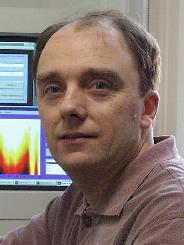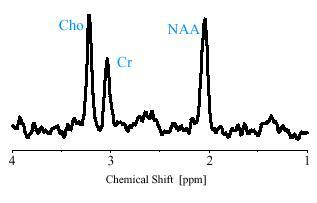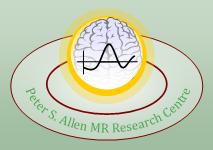MR Faculty staff
Back to MR Faculty staff

Faculty Service Officer IV
Department of Biomedical Engineering, University of Alberta
 Areas of research:
Areas of research:
MR Spectroscopy
Looking for students: no
Phone nr: 780-492-2542
Search for all publications in PubMed

Chris Hanstock, PhD
Faculty Service Officer IV
Department of Biomedical Engineering, University of Alberta
 Areas of research:
Areas of research:MR Spectroscopy
Looking for students: no
Phone nr: 780-492-2542
Search for all publications in PubMed
Graduate Royal Society of Chemistry (1976)
Ph.D. (1981), Staffordshire University, UK.
Chartered Chemist, Member of the Royal Society of Chemistry, UK 1981.
Joined University of Alberta in 1981.
In vivo NMR Studies of Tissue Metabolism
My research program, since joining the NMR Facility at the University of Alberta in 1985 and during 1 year periods at Yale University, USA (1987-88) and James Cook University, Australia (1991-92), has focussed on the development and application of NMR techniques that can be used to study in vivo tissue metabolism. In particular, much my work has been in the identification and quantification of brain and muscle metabolites, as observed by 1H, 31P and 13C NMR spectroscopy, and monitoring the changes that result during normal function, or following injury / disease, as well as the effects of a variety of drugs.
Current work, aimed primarily at our brain metabolism program, includes the development of several new techniques (eg. single voxel segmentation, and single voxel J-resolved 2D spectroscopy). Continuing studies are allowing us to monitor the neuro-degenerative diseases ALS (amyotrophic lateral sclerosis) , Huntington's , and Parkinson's. We are also continuing our studies observing the effects and role of lithium and amphetamine on brain metabolism in order to gain a better understanding of the intracellular secondary messenger system, and its role in bipolar disorder. In addition, we are observing the changes in the brain metabolites that occur in schizophrenia for both adults and high-risk adolescents.
Recent projects relating to muscle metabolism include the evaluation of the constrained environment of phosphocreatine at rest and during ischemic fatigue, studies of the effects of maturation on muscle function, and exploring the effectiveness of hyperbaric oxygen to aid muscle repair following injury.
Relevant Publications
Ph.D. (1981), Staffordshire University, UK.
Chartered Chemist, Member of the Royal Society of Chemistry, UK 1981.
Joined University of Alberta in 1981.
In vivo NMR Studies of Tissue Metabolism
My research program, since joining the NMR Facility at the University of Alberta in 1985 and during 1 year periods at Yale University, USA (1987-88) and James Cook University, Australia (1991-92), has focussed on the development and application of NMR techniques that can be used to study in vivo tissue metabolism. In particular, much my work has been in the identification and quantification of brain and muscle metabolites, as observed by 1H, 31P and 13C NMR spectroscopy, and monitoring the changes that result during normal function, or following injury / disease, as well as the effects of a variety of drugs.
Current work, aimed primarily at our brain metabolism program, includes the development of several new techniques (eg. single voxel segmentation, and single voxel J-resolved 2D spectroscopy). Continuing studies are allowing us to monitor the neuro-degenerative diseases ALS (amyotrophic lateral sclerosis) , Huntington's , and Parkinson's. We are also continuing our studies observing the effects and role of lithium and amphetamine on brain metabolism in order to gain a better understanding of the intracellular secondary messenger system, and its role in bipolar disorder. In addition, we are observing the changes in the brain metabolites that occur in schizophrenia for both adults and high-risk adolescents.
Recent projects relating to muscle metabolism include the evaluation of the constrained environment of phosphocreatine at rest and during ischemic fatigue, studies of the effects of maturation on muscle function, and exploring the effectiveness of hyperbaric oxygen to aid muscle repair following injury.
Relevant Publications
- Trump M.E., Hanstock C.C., Allen P.S., Gheorghiu D., and Hochachka, P.W., An 1H-MRS Evaluation of the Phosphocreatine/Creatine Pool (tCr) in Human Muscle. Amer. J. Physiol. March 2001 issue
- O'Donnell T., Rotzinger S., Nakashima T.T., Hanstock C.C., Ulrich M., Silverstone P.H., Chronic lithium and sodium valproate both decrease the concentration of myo-inositol and increase the concentration of inositol monophosphates in rat brain. Brain Research 880(1-2), 84-91 (2000).
- Tibbo P., Hanstock C.C., Asghar S., Silverstone P., Allen P.S., Proton magnetic resonance spectroscopy (1H-MRS) of the cerebellum in men with schizophrenia. Journal of Psychiatry and Neuroscience 25(5), 509-512 (2000).
- Petersen, S.R., Gaul, C.A., Stanton, M.M., and Hanstock, C.C., Skeletal muscle metabolism during short-term, high-intensity exercise in prepubertal and pubertal females. J. Applied Physiol. 87(6),2151-2156 (1999).
- Silverstone, P.H., Rotzinger, S., Pukhovsky, A., and Hanstock, C.C., Effects of lithium and amphetamine on inositol metabolism as measured by 1H and 31P MRS. Biological Psychiatry 46,1634-1641 (1999).
- Hanstock, C.C., Thompson, R.B., Trump, M.E., Gheorghiu, D., Hochachka, P.W., and Allen, P.S., The TE-dependence of the residual dipolar coupling of the Cr / PCr methyl resonance in resting human medial gastrocnemius muscle. Magn. Reson. Med., 42(3): 421-424 (1999).
- Hanstock, C.C. and Allen, P.S., Applications of proton MRS to study human brain metabolism. Neuromethods, 33: 347-380, Humana Press (1998).
- Cwik, V.A., Hanstock, C.C., Allen, P.S., and Martin, W.R.W., Objective quantification of brainstem neuronal loss in amyotrophic lateral sclerosis by in vivo proton magnetic resonance spectroscopy. Neurology, 50(1): 72-77 (1998).
- Hanstock, C.C., Faden, A.I., Bendall, M.R., and Vink, R., Diffusion-weighted imaging differentiates ischemic tissue from traumatised tissue. Stroke, 25(4): 843-848 (1994).
- Rothman, D.L., Novotny, E.J., Shulman, G.I., Howseman, A.M., Petroff, O.A.C., Mason, G., Nixon, T., Hanstock, C.C., Prichard, J.W., and Shulman, R.G., 1H-[13C] NMR measurements of [4-13C]glutamate turnover in human brain. Proc.Natl.Acad.Sci., 89: 9603-9606 <1992).
- Matheson, G.O., Allen, P.S., Hanstock, C.C., Gheorghiu, D., Ellinger, D.C.,McKenzie, D.C., Stanley, C., Parkhouse, W.S., and Hochachka, P.W., Skeletal muscle and work capacity : a 31P NMR study of Andean natives and lowlanders. J. Applied Physiol., 70(5): 1963-1976 (1991).
- Prichard, J., Rothman, D.L., Novotny, E., Petroff, O., Kuwabara, T., Avison, M., Howseman, A., Hanstock, C.C., and Shulman, R., Lactate rise detected by 1H NMR in human visual cortex during physiologic stimulation. Proc.Natl.Acad.Sci., 88: 5829-5831 (1991).
- Hanstock, C.C., Rothman, D.L., Shulman, R.G., Novotny, E.J., Petroff, O.A.C., and Prichard, J.W., Measurement of ethanol in the human brain using NMR spectroscopy. J.Studies in Alcohol, 51(2): 104-107 (1990).
- Hanstock, C.C., Rothman, D.L., Prichard, J.W., Jue, T., and Shulman, R.G., Spatially localised 1H NMR of metabolites in the human brain. Proc.Natl.Acad.Sci.USA, 85: 1821-1825 (1988).
- Hanstock, C.C., Boisvert, D.P., Bendall, M.R., and Allen, P.S., In-vivo assessment of focal brain lactate alterations with NMR proton spectroscopy. J.Cerebral Blood Flow and Metabolism, 8(2): 208-214 (1988).


